 |
|

|
 |
TABLE of CONTENTS
 |
Name a Snowplow contest returns for third year |
|
The annual Name a Snowplow is back by popular demand. For the third year in a row, MnDOT is inviting the public to help name another round of eight snowplows, one for each MnDOT district in the state.
Past winners include creative names like Betty Whiteout, Plowy McPlowFace, Ctrl Salt Delete, Snowbi Wan Kenobi and The Truck Formerly Known As Plow. MnDOT encourages Minnesotans – including agency employees, if they’re so inclined – to submit their most witty, unique and Minnesota- or winter-themed snowplow name ideas on the agency’s website. Submissions will be accepted through Friday, Dec. 16.
MnDOT staff will review all the submissions, select some of the best ideas, and invite the public to vote on their favorites in January 2023. The eight names that get the most votes will then make their way onto a snowplow in each district.
As of Dec. 12, MnDOT had received more than 8,000 nominations. |
 |
|

|
 |
TABLE of CONTENTS
 |
Piezometers give designers glimpse of groundwater at worksites |
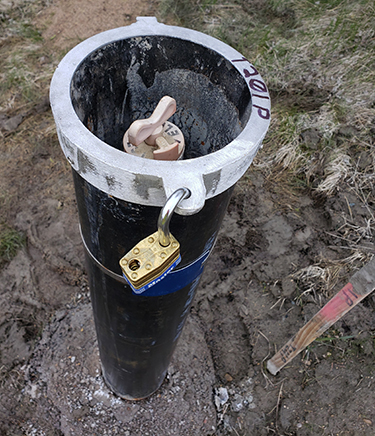
The most common type of piezometer is an open standpipe system like this one. These two-inch diameter plastic pipes are installed in a 4- to 8-inch diameter borehole and backfilled with pea gravel. Workers periodically lower a measuring tape or water sensor into the plastic pipe to measure the water elevation. Photo by Rich Lamb |
By Joseph Palmersheim
A current District 8 project in Marshall highlights a little-known but valuable subsurface investigation tool: the piezometer (pronounced “puh-zhom-itter”).
These geotechnical instruments are installed below ground to measure the static water level in the soil (water table) over an extended period. MnDOT is installing up to 20 piezometers this month to measure ground water levels to determine possible water-removal needs for the reconstruction of Hwy 19 through the downtown area, which is scheduled for 2025-26.
“We drill soil borings and regularly measure water levels, but this type of measurement is not very accurate because of the use of drilling fluids, and doesn't show us seasonal fluctuations,” said Rich Lamb, state foundations engineer, Geotechnical Engineering Section. “Groundwater is constantly changing with weather cycles. The only way to get a good sense of how it changes is to put a measuring tool in the ground and observe over months or years.”
The most common type of piezometer is an open standpipe system. These two-inch diameter plastic pipes are installed in a 4- to 8-inch diameter borehole and backfilled with pea gravel. The top, hollow portion of the plastic pipe is connected to a lower portion that is perforated with tiny slits. These allow water to enter and rise up into the pipe. Workers periodically lower a measuring tape or water sensor into the plastic pipe to measure the water elevation. Automated data collection systems, which feature a pressure-measuring recording devices inserted at the bottom of the standpipe, are becoming more common because they collect more continuous data and require fewer site visits, Lamb said.
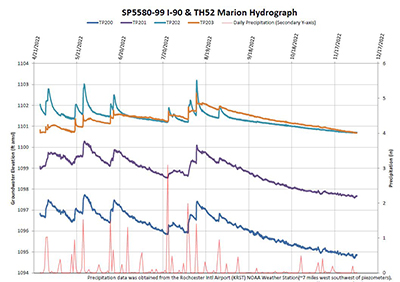
This hydrograph from the Hwy 52 Marion project shows what piezometer data can look like. It shows the groundwater elevation fluctuations at a location with proposed stormwater ponds. |
“One year is never the same as the next," said Micah Holzbauer, geophysicist, Geotechnical Engineering. "We've had plenty of areas where districts are getting water flowing onto the road and freezing, which is a traffic hazard. We can use piezometers and borings to understand the geology and groundwater levels in the area and see what the problem is.”
Once the problem is fixed, piezometers can remain in the ground for years afterwards to keep an eye on the groundwater levels. If the groundwater creeps up again, crews will know about the problem well before it flows onto the road and freezes.
Lamb estimated that roughly 10 to 20 percent of MnDOT projects use piezometers Used mainly to determine ground water levels, different types of piezometers can also monitor the performance of embankments and subsurface drainage systems, both during construction and long after.
“Determining water levels is important not just for excavations and drainage issues, but it is vital for foundation designs for structures and embankments,” Lamb said. “Saturated soils behave differently from dry or moist soils. In general, saturated soils are weaker and compress more when loaded compared to dryer soils, so knowing where the soil moisture levels change is very important.” |
 |
|

|
 |
TABLE of CONTENTS
|
Staffing updates |
Blanchard and Turgeon to begin office director mobility opportunities with Office of Materials and Road Research
The Office of Materials and Road Research has finalized details for two 9-month WOOC mobility opportunities for office director position.
Amber Blanchard will begin her office director mobility on Dec. 21 and Curt Turgeon will begin his office director mobility on Sept. 12, 2023.
Blanchard has worked at MnDOT for more than 20 years in various roles in the Bridge Office, Office of Construction and Innovative Contracting, and Metro District.
She most recently served as the major projects manager in the Metro District, working to deliver the I-494: Airport to Hwy 169 Design-Build first construction project and the Stone Arch bridge repairs project.
Turgeon has been with MnDOT for more than 35 years. He has worked in Materials, Construction and Maintenance in Central Office and Metro District and has been in his current position as state pavement engineer for 19 years.
Turgeon has also served as vice chair of the AASSHTO Committee on Materials and Pavements; chair of AASHTO Technical Subcommittee on Quality and Environment; the FHWA Sustainable Pavements Technical Working Group and the Permanent International Association of Road Congresses Pavement Technical Committee.
Schaffner is new director of Office of Transportation System Management
Philip Schaffner has begun a new role as the director of the Office of Transportation System Management, effective Dec. 12.
He has been with MnDOT since 2009 and served in various positions in OTSM and its predecessor, the Offices of Statewide Multimodal Planning and Investment Management.
He has also led key work on the SMTP, MnSHIP, MnDOT Project Selection Policy, Complete Streets, TED and programs and projects.
Before joining MnDOT, Schaffner worked at the Volpe National Transportation Center and a nonprofit affordable housing developer.
|
 |
|

|
 |
TABLE of CONTENTS
|
Central Office cafeteria to reopen Jan. 3 |
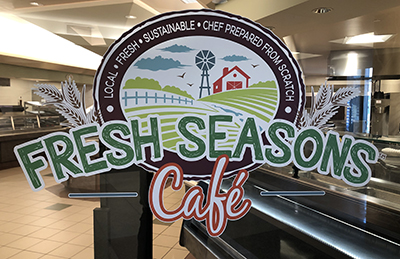
Coming Jan. 3. Photo by Stephen Terhaar
|
By Stephen Terhaar, Operations Director Ė Central Office
The Taher cafeteria inside the Transportation Building in St. Paul will reopen on Jan. 3 for a two-week trial period. If it proves to be profitable and sustainable during that time, the cafeteria will remain open beyond the trial period. The more business the cafeteria receives during the trial period, the greater the likelihood that it will remain open.
Throughout the COVID-19 pandemic, many employees have inquired about the cafeteria’s plans to reopen. While there is still uncertainty regarding the long-term plans for the cafeteria, this is an opportunity for MnDOT staff to support a local small business. More information, including Taher’s future plans for Capitol Complex cafeterias, will be posted on the cafeteria website as it becomes available.
|
 |
|

|
 |
TABLE of CONTENTS
|
Leadership Development Program offers opportunities for career growth |
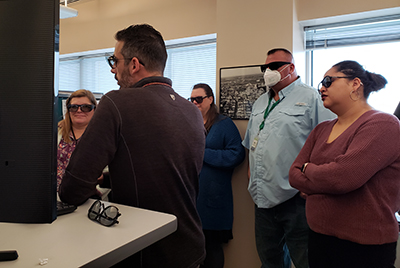
Colin Lee (back toward camera), Engineering Specialist Senior in the Office of Land Management, explains his work in the Photogrammetric Unit to a group of LDP participants wearing 3D glasses to view a map during an LDP Learning Opportunity Nov. 15. Photo by Elizabeth Otto
|
By Elizabeth Otto, Workforce Development
As one calendar year wraps up and a new one is about to begin, now is a great time to consider your options for investing in yourself and your career development. The Leadership Development Program, or LDP, is a resource employees can use to acquire and build skills to become more effective in their current role and develop knowledge and competencies to support their career advancement. Watch this short video for an overview of the requirements for participation in the LDP.
Enrollment is now open and closes on Jan. 13, 2023. To enroll, complete the Commitment Agreement found under the Enroll tab on the newly revised Leadership Development Program iHUB page.
At the beginning of the program, participants will participate in an orientation session to compose individualized goals for their professional development during the program year. Most participants choose to complete LDP-administered training as part of their work toward their goals. The training will be offered as a mix of online and in-person experiences to suit the schedules and learning preferences of employees across the agency.
To learn more about the program requirements, attend one of the informational sessions listed below. No registration is required for these sessions.
Contact Elizabeth Otto if you have any questions about the LDP or the informational sessions.
|
 |
|

|
 |
TABLE of CONTENTS
|
Office of Financial Management Grants Unit finalizes revised Agency Grants Management Policy and Procedure Manual |
By Laura Godfrey, Office of Financial Management
The Grants Unit in the Office of Financial Management recently finalized a project that involved revising the Agency Grants Management Policy and Procedure Manual. The work included developing agency minimum standards for MnDOT’s grant administration based on state and federal regulations and identified risks. The revised policy also lays out roles and responsibilities for MnDOT’s Grants Community, which consists of agency staff from offices and districts involved in applying for, receiving, using, awarding, administering, monitoring, and closing out grants.
“The goal of this project was to ensure all stakeholders were able to be part of the big picture. Our team is grateful for the time and effort that each office and district put into this project to ensure their feedback was incorporated into the new MnDOT Agency Grants Management Policy and Procedure Manual,” said Holly Folkers, Assistant Budget Director.
A team comprised of agency senior leadership oversaw the project, and the overall project team included the Offices of Financial Management, Chief Counsel, Audit, Transit and Active Transportation, Transportation System Management, Civil Rights, Freight and Commercial Vehicle Operations and State Aid.
In addition to the revised Agency Grants Management Policy and Procedure Manual, the Grants Unit has added a number of tools to assist agency staff and offices at each stage in the grant making process, from posting the solicitation to the final close-out. All of these tools, along with the Grants Unit quarterly newsletter, can be found on the Grants iHUB page. The Grants Unit is also in the process of reorganizing the Grants iHUB page to better aid agency staff and offices in finding the tools, resources and trainings that best fit their needs as they process grants.
Please feel free to reach out to the Grants unit with any questions or comments at GrantSupport.DOT@state.mn.us.
|
 |
|

|
 |
TABLE of CONTENTS
|
Upcoming sessions offer opportunities to learn about public engagement |
By Alyssa Kruzel
The following events and opportunities offer employees across MnDOT the chance to learn more about public engagement.
Discussing Public Engagement monthly meetings
Join public engagement and communications staff, project managers, planners and other MnDOT staff involved in public engagement activities for the monthly Discussing Public Engagement meetings, which include case studies and lessons learned, best practices and guidance, resources, hot topics, and guest speakers, all related to public engagement.
The Discussing Public Engagement meetings are held virtually via Teams, the second Tuesday of the month, 2:00-3:00 p.m. Contact Alyssa Kruzel to be included on the monthly meeting invitations and Discussing Public Engagement listserv. This group is open to anyone interested in learning more about public engagement at MnDOT.
International Association of Public Participation membership
Consider joining MnDOT’s International Association of Public Participation organizational membership. Membership provides access to free webinars and discounted trainings (check the organization’s website for information about upcoming webinars and trainings. Members an also access archived IAP2 Webinars. There is no cost to any MnDOT employees who wish to join.
Contact Alyssa Kruzel to be added to MnDOT’s IAP2 membership or if you need any assistance registering for upcoming IAP2 webinars and trainings.
International Association of Public Participation (IAP2) 2023 Midwest Chapter Conference
Save the for the 2023 IAP2 Midwest Chapter conference, which will be hosted in Eagan at the Eagan Community Center from May 3 to May 5. The 2023 conference theme is “Meeting People Where They Are in Public Participation.’’ Registration will open in early 2023. Contact Alyssa Kruzel to be notified when conference registration opens.
MnDOT employees can also share their experiences and expertise at the conference by responding to the call for conference session proposals. Proposals are due by Jan. 6, 2023. at 11:00 a.m.
|
 |
|

|
 |
TABLE of CONTENTS
|
Complete Streets training sessions rescheduled |
The first Complete Streets Policy staff training on Nov. 29 was a successful event, with good representation of districts and support offices across Minnesota. Two more sessions are planned, but the original dates have been rescheduled and will switch to a virtual format to better accommodate schedules and effective class sizes.
The new training times are on Thursday, Jan. 5 and Tuesday, Jan. 17, both from 1:30 p.m. to 4:30 p.m. To register for a session, to visit the Learning Center, search “Complete Streets” and select one of the new timeslots.
District planning staff, project managers and project sponsors are encouraged to prioritize this training. These sessions have a 45-person registration capacity; organizers will add an additional session if needed.
There are also a number of related resources to support staff. This includes the new Complete Streets Sharepoint (for project reporting access), Complete Streets webpage and the Complete Streets Handbook. If you have any questions about these documents or the training, contact Nissa Tupper, Transportation and Public Health Planning Director, Office of Sustainability and Public Health.
|
 |
|

|
 |
TABLE of CONTENTS
|
On the Job: Stephen Terhaar keeps Central Office going |
By Doug Mack
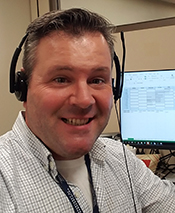
Stephen Terhaar. |
If you’ve been to Central Office for any reason in the past few years, you probably haven’t seen Stephen Terhaar in person, but you’ve definitely seen some part of his work. Stephen is the building’s operations director, leading the team that keeps the facility functioning and always adapting to changing needs (a major theme in recent times).
How long have you been at MnDOT and in what positions?
I started at MnDOT in July 2015. My first position was as a supervisor in the Commissioner’s office. In 2019, I accepted the position of operations director for the Central Office Building, within the Office of Administration.
How has your job (and/or the agency) changed since you started at MnDOT, especially in the last couple of years?
In 2019, I was tasked with performing a space assessment for Central Office. The goal was to determine what changes (either to the building or to the way MnDOT employees worked) would be needed to accommodate employees’ growing space needs in the building. The tenets of that space assessment, which was approved to proceed in February 2020 (one month before everything changed!), served as the foundation for much of the Work Evolving Vision and Opportunity planning. The recommendations from our assessment – including standardizing telework at MnDOT, building more collaboration and flex-use spaces in our buildings, purchasing and installing more hybrid technologies, and providing more amenities to employees working in our buildings – have been and continue to be focus areas of the Work EVO project team.
What are your day-to-day tasks?
During a typical day, I wear three main hats. The biggest part of my job is serving as the Central Office operations director. In this role, I support the employees who provide central services to the CO building, including facility management, the mail and inventory centers, information desk, motor pool, and physical security. It’s very rewarding to me to know that the work these teams does impacts MnDOT employees and our constituents every day.
The second main part of my job focuses on physical security for the agency. I am the application steward for MnDOT’s security-related IT applications, and my team and I support the badge access and surveillance camera systems in MnDOT’s facilities across the state. My team also takes part in facility and human-centered physical security planning and improvement conversations across the department.
I’ve also been a main player in MnDOT’s COVID-19 response, Return To Office/Work, and Work EVO project teams. It’s been amazing to look at how far we’ve come as an agency within three years. We started in March 2020 with the goal of keeping employees safe while performing their essential functions for the state, and that has morphed into planning the work environments, styles, and spaces of the future.
What the most challenging and rewarding parts of your job?
The variety. I really enjoy all the different ways I can serve the agency and the state. Each day, I know I’ll have the chance to work on new and exciting projects with colleagues from around the department. However, being pulled in so many directions by competing demands can make it difficult to give tasks the attention and focus they deserve. I’m very fortunate to have a great team reporting to me – I know I can depend on them to pick up my slack!
Are there any upcoming things that you’re particularly excited about?
I am most excited to be part of the planning process as MnDOT moves into the post-pandemic world. So much changed as a result of COVID-19, especially how the state does business. I’m looking forward to MnDOT implementing the right balance of work styles to support the changing needs of our employees, while at the same time continuing to provide excellent services to our constituents.
Also, I’d like to put in a plug for the CO cafeteria, reopening Jan. 3, 2023! We hope to see a strong turnout in support of that business. If you see me there filling up my coffee cup, say hello.
Do you or a co-worker have an interesting job to share with readers? Send us your ideas, and we’ll contact you for more information.
Recent employee profiles:
|
| |
|

|
 |
TABLE of CONTENTS
|
STEM Education and Outreach ambassadors introduce students to MnDOT |
By Marcia Lochner, STEM Education and Outreach Program Manager
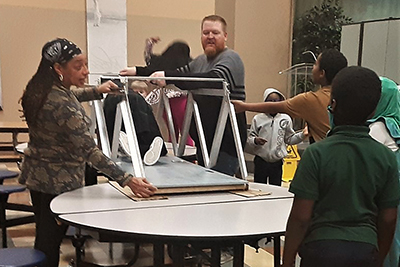
MnDOTís Daniel King works with a teacher to show students how bridge structural systems work. Photo by Marcia Lochner
|
STEM Education and Outreach ambassadors Daniel King (Graduate Engineer in Metro Design) and Kelley Flanders (Metro Construction Inspection) held Bridge-in-a-Bag sessions with elementary school students at the Innovation Science and Technology Academy in Brooklyn Park on Nov. 10. King and Flanders reported that the students enjoyed learning about bridges and potential career opportunities MnDOT offers.
A thank-you note from the school’s principal highlighted the team’s hard work and impact on the students. The note said, in part:
"Thank you for being generous with your expertise, talents and resources. Wow, you did an amazing job of sparking our students' interest in engineering! They learned and had fun! It was very engaging and exciting! After you left, students were discussing their passions for engineering and that never happened before. You made science come alive to our students. They also appreciated more than ever before the teamwork skills that were put into the project. The fundamental principle of the design presented in the classroom before transition to the gym for the building was a learning moment for our students. They grew in their understanding of keeping safety at the forefront of the construction."
"The science of doing, building and creating put into the building of the bridge by the students was phenomenal. Most importantly, they were thrilled by the testing of their design. Every student went over the bridge and the bridge did not collapse! That was stunning!"
MnDOT receives countless varying outreach requests year-round, and staff from all backgrounds can participate and make a difference for students throughout Minnesota. To learn more – and sign up to be an ambassador – visit the STEM page on iHUB or contact Marcia Lochner. |
| |
|

|
 |
TABLE of CONTENTS
|
Mossier offers learning and training opportunities for MnDOT employees |
By Jen Parshley, Commissionerís Office
The Queer & Allies ERG and MnDOT human resources have a contract with the non-profit organization Mossier to post jobs, connect with job seekers, attend meetups and participate in learning modules such as culture of inclusion, recruiting LGBTQ talent, employee resource groups and being anti-racist. As part of the contract, there are 500 Mossier memberships available to MnDOT to employees, giving them access to meetups, learning modules, discussion forums and other opportunities. Employees interested in using one of these memberships should contact Q&A ERG co-chair Jen Parshley via email.
To learn more about Mossier, visit their website. Please note MnDOT does not moderate the Mossier’s content information. |
| |
|
|
|



